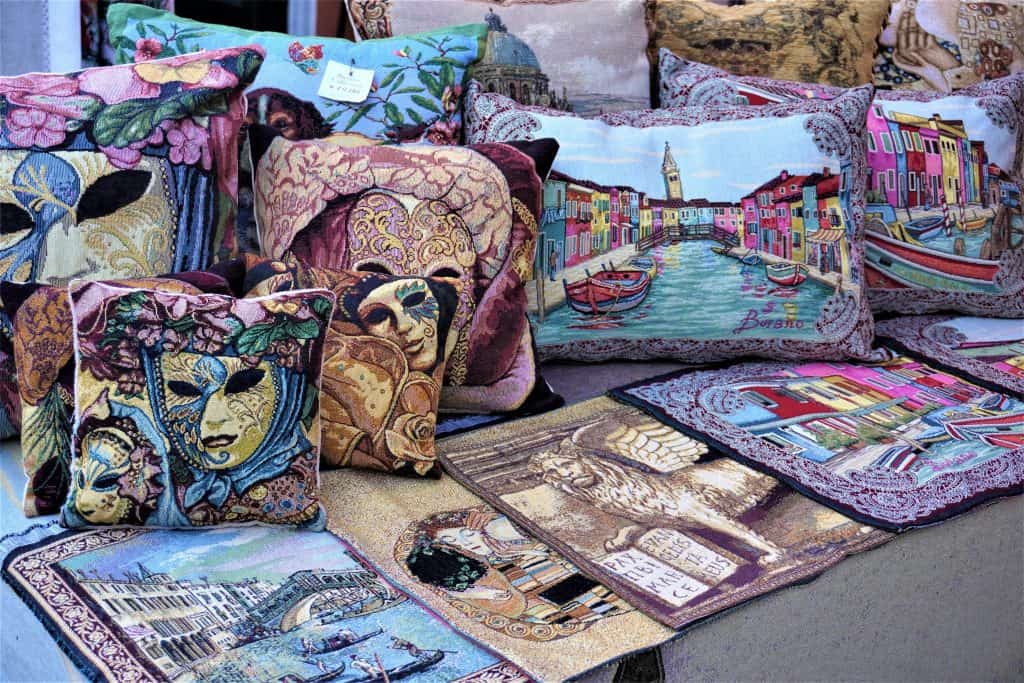
08 Mar The Role of Private Art Collections in Public Showcases
The emergence of private art collections into public view is reshaping traditional practices and sparking conversations about accessibility and ethics. Once confined to exclusive vaults, these collections are now featured in public exhibitions, challenging notions of ownership and cultural stewardship. This shift reflects a broader societal trend towards democratizing art, but it also raises ethical concerns about provenance and commodification. The convergence of private collections and public showcases underscores the delicate balance between individual ownership rights and the collective interests of society. As private collectors grapple with the decision to share their treasures, they confront tensions between autonomy and cultural stewardship. Meanwhile, public institutions face the challenge of maintaining the integrity of artworks while ensuring equitable access for diverse audiences. By fostering open dialogue and embracing ethical practices, stakeholders can navigate these complexities to enrich our collective understanding of art and foster a more inclusive cultural landscape.
Benefits of Private Collections in Public Showcases

Photo by Dan Hadar
Access to Rare and Unseen Artworks
Private collections act as sanctuaries for rare and unseen artworks, safeguarding them within secure vaults away from the public eye. These collections harbor hidden gems, such as Impressionist masterpieces and newly unearthed archaeological treasures, which remain inaccessible to most people. However, through carefully curated exhibitions, these artworks are brought into the limelight, serving as a conduit for a broader audience to appreciate their beauty and historical significance. Picture the awe-inspiring moment when visitors encounter long-hidden treasures, like rediscovered Impressionist paintings or recently excavated artifacts, sparking fascination and admiration among museum-goers.
Diverse and Thematic Exhibitions
Private collections offer invaluable insights into the world of art by curating diverse and thematic exhibitions that provide focused perspectives on specific artists, movements, or historical periods. These exhibitions not only enhance the cultural landscape of public institutions but also contribute to expanding the breadth and depth of their permanent collections. Imagine immersive showcases dedicated to underrepresented artists, such as female surrealists or forgotten abstract expressionists, resurrecting their artistic legacies and shedding light on overlooked narratives. Through these thematic exhibitions, visitors are invited to delve deeper into the nuances of artistic expression and historical context, enriching their understanding of the art world’s diverse tapestry.
Financial Support and Collaboration
The relationship between private collectors and public institutions extends beyond the display of artwork, encompassing vital financial support and collaborative initiatives. Private collectors play a pivotal role in sponsoring exhibitions, facilitating the acquisition of new artworks, and donating pieces from their collections to enrich cultural offerings. Through corporate sponsorships, joint research projects, and loan agreements, public institutions and private collectors forge synergistic partnerships that amplify the accessibility and appreciation of art. These collaborations not only foster a sense of community within the art world but also ensure the preservation and promotion of cultural heritage for generations to come.
Challenges and Considerations
Photo by Patrick Tomasso
Accessibility and Elitism

While private collections undoubtedly contribute to the richness of public showcases, concerns about accessibility and elitism often loom large. The presence of high ticket prices and the perception of exclusivity can create barriers that prevent diverse audiences from engaging with art. To address these concerns, prioritizing inclusivity becomes paramount. Community outreach programs, educational initiatives, and scholarships aimed at underserved communities can help bridge the gap, making art more accessible to people from all walks of life. By breaking down financial and social barriers, these initiatives ensure that art remains a source of inspiration and enrichment for everyone, regardless of background or means.
Provenance and Ethics
The provenance of artworks held in private collections raises complex ethical questions, particularly concerning issues of ownership and the presence of looted art. Transparent and ethical sourcing practices are imperative to maintain the integrity of the art world. Debates surrounding restitution and adherence to international protocols for the protection of cultural property become central in navigating these ethical challenges. Upholding rigorous standards of due diligence and accountability ensures that artworks are acquired and held ethically, preserving their cultural and historical significance while safeguarding against exploitation or injustice.
Balancing Public Interest and Private Ownership
Navigating the delicate balance between public interest and private ownership requires thoughtful consideration and clear communication. While public access to private collections can enrich cultural experiences, it must be done in a manner that respects the rights and preferences of owners. Establishing clear agreements and collaborative frameworks, such as formalized loan agreements with specific access stipulations or exploring joint ownership models, helps mitigate potential conflicts while promoting mutual understanding and cooperation between collectors and public institutions. By fostering transparency and dialogue, stakeholders can work together to uphold the integrity of private collections while ensuring that the broader public can benefit from their cultural treasures.

Photo by Diane Picchiottino
Conclusion
The relationship between private art collections and public showcases is a dynamic interplay that enriches the art world. Private collections, once hidden treasures, are now accessible to a broader audience, providing rare and thematic perspectives that complement public institutions. The collaboration between private collectors and public entities extends beyond showcasing artwork to include financial support and partnerships that enhance cultural offerings.
However, this integration comes with challenges that demand careful consideration. Ensuring accessibility and inclusivity for diverse audiences is paramount, as is addressing concerns of elitism through community outreach and educational initiatives. Ethical considerations related to the provenance of artworks in private collections require transparent and ethical sourcing practices, while balancing public interest and private ownership necessitates clear agreements and collaborative frameworks.
In conclusion, the integration of private art collections into public showcases holds great promise for the art world. It offers diverse perspectives, enriches cultural narratives, and fosters collaborations. While navigating the challenges posed by accessibility, ethics, and ownership, the future holds the potential for innovative solutions that maintain a delicate equilibrium between public accessibility and private ownership, ensuring that art remains a shared and enriching experience for all.
Key Takeaways
Main Aspects | Important Points |
Access to Rare Artworks | Exhibitions bridge the gap, granting public access to treasures from private vaults. |
Diverse and Thematic Exhibitions | Thematic exhibitions from private collections enrich and expand public art experiences. |
Financial Support and Collaboration | Collaborations between private collectors and public institutions enhance cultural offerings. |
Accessibility and Elitism | Addressing high ticket prices through outreach programs ensures art is accessible to all. |
Provenance and Ethics | Transparent sourcing practices are crucial to navigating ethical challenges in private collections. |
FAQs
Why are private art collections becoming more prevalent in public showcases?
Private art collections are increasingly finding their way into public showcases due to several compelling reasons. Firstly, these collections often boast rare and unseen artworks that may not otherwise be accessible to the public. By exhibiting these pieces, public institutions can offer visitors unique and enriching experiences, broadening their perspectives on art. Additionally, private collections often curate diverse thematic exhibitions that add depth and variety to the cultural landscape. Moreover, financial support from private collectors can be instrumental in funding exhibitions, conservation efforts, and educational programs, thus enhancing the overall quality and accessibility of public art displays.
How can concerns about elitism in private exhibitions be addressed?
Addressing concerns about elitism in private exhibitions requires proactive measures to ensure inclusivity and accessibility. Community outreach programs can engage underserved populations and encourage their participation in art-related activities. Educational initiatives aimed at schools and community centers can foster appreciation for art across diverse demographics. Furthermore, offering scholarships or subsidized admission fees can make private exhibitions more accessible to individuals with limited financial means, thereby mitigating perceptions of exclusivity and elitism.
What ethical considerations arise in displaying artworks from private collections?
Ethical considerations loom large when displaying artworks from private collections. Provenance, or the documented history of ownership, becomes a critical issue, with a particular focus on ensuring that artworks have been ethically sourced and acquired. This includes scrutinizing the ownership history to avoid displaying pieces with questionable origins, such as those obtained through theft or looting. Public institutions must adhere to rigorous standards of due diligence to uphold ethical principles and avoid perpetuating injustices associated with the illicit trade of cultural heritage.
How can the balance between public interest and private ownership be maintained?
Maintaining the delicate balance between public interest and private ownership necessitates clear agreements and collaborative frameworks. Institutions must negotiate specific terms with private collectors, outlining conditions for the display and accessibility of artworks on loan. These agreements may include stipulations regarding the duration of the exhibition, security measures, and public access. By establishing transparent guidelines and fostering open communication between public institutions and private collectors, both parties can work together to promote the broader cultural and educational goals of the community while respecting the rights and interests of private owners.
Discover the powerful world of “Grassroots Movements in the Art Community” and how they are promoting inclusion, creativity, and cross-cultural communication from the ground up. They also play a critical role in empowering and engaging a varied range of artists and enthusiasts.

